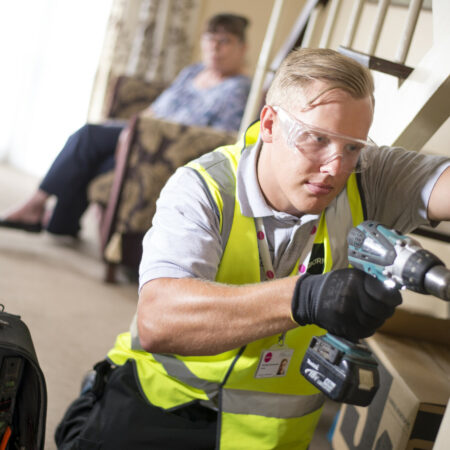A Three-Point Plan for Eliminating Disrepair Claims
When it comes to avoiding disrepair claims, prevention is better than cure. Water-tight coordination of work streams is essential. Here, we explore why disrepair claims are on the increase and what social housing providers can do about it.
Why are Disrepair Claims on the Increase?
The last few years have been difficult for social housing providers. Covid added to repair and maintenance backlogs as access to properties was restricted except for emergencies. Staff absences were higher than normal as people had to self-isolate if they came into contact with the virus. Finally, Brexit added to skills shortages across the construction sector.
Delays in property maintenance often lead to more serious issues. Meanwhile, against this difficult operating environment, the profile of property condition has been raised significantly by new legislation such as the Homes (Fitness for Human Habitation) Act 2018 and proactive consumer regulation.
There are also several legal firms offering ‘no win, no fee’ legal services to tenants who they contact speculatively.
Figures gathered by Inside Housing in early 2022 revealed that across 70 English councils there were nearly 17,000 disrepair claims in the previous five years. More than £55.1m was paid out. As 100 councils didn’t provide data, the true figure will be significantly higher. Clearly, there’s a lot of money being paid out in avoidable claims that could be going into building and improving properties and retrofitting them to be easier to heat.
If high energy bills make it difficult for people to heat their homes adequately this winter, there will be greater likelihood of issues with damp and mould.
What does Disrepair Mean?
Disrepair covers many potential faults including:
- Missing or loose roof tiles;
- Structural cracks (including as a result of subsidence);
- Spalled brickwork and exposed brickwork with un-pointed mortar;
- Failed glazing;
- Damaged or ill-fitting external doors;
- Damp and mould;
- Faulty electrics;
- Gas or water leaks;
- Faulty space and water heating; and
- Vermin infestations.
It’s obvious from this list that avoiding disrepair claims involves many different teams and skills.
If residents’ concerns aren’t addressed within a reasonable time scale they can raise a disrepair claim.
How can Disrepair Claims be Avoided?
Here’s a three-point plan for minimising or avoiding disrepair claims:
- Defending a disrepair claim is difficult if you have an incomplete picture of the property condition and repair history. Sometimes it’s probably simpler just to settle. Knowing your stock in detail helps you defend claims cost-effectively and plan proactive maintenance to reduce the chances of problems occurring.
- Efficient systems that allow you to respond quickly to resident concerns are also essential. The high profile and complexity of disrepairs makes relying on spreadsheets and emails a high-risk way of operating.
- Finally, coordinated work streams help to deal with repairs efficiently and with less disruption to residents. Ideally there will be just one visit to plan, which greatly increases the chances of completing the repair in an acceptable time.
As part of our property services partnership with Slough Borough Council we formed a dedicated team to work on disrepairs. This team coordinates different work streams with a single point of contact for project management and coordination.
If you’d like to understand more our approach to eliminating disrepair claims contact Jo Fletcher ([email protected]) or access our resource centre.

